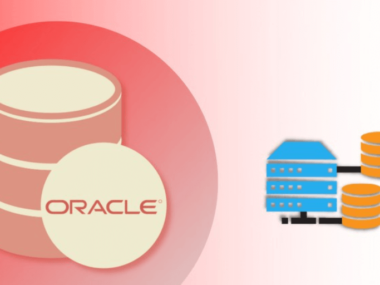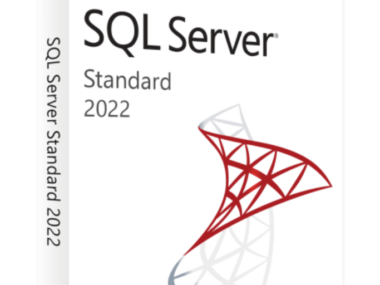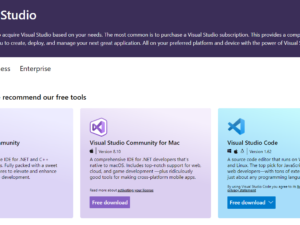IBM DB2 is a family of data management products developed by IBM. DB2 stands for Database 2. It was initially introduced in 1983 on its Multiple Virtual Storage (MVS) mainframe.
It is a relational database management system (RDBMS) that supports the relational model. It has been extended to support object-relational features. It now also supports non-relational structures like JSON and XML.

IBM DB2 is a cloud-native database. It provides a single engine for DBAs, enterprise architects, and developers. They use it to keep critical applications running. They also use it to store and query anything. It powers faster decision-making and innovation across organizations.
Decades of expertise have built it. This expertise includes bringing data governance, security, low-latency transactions, and continuous availability to mission-critical data. It also includes analytics and AI-driven applications.
IBM DB2 powers low-latency transactions and real-time analytics at scale. This makes it an ideal choice for businesses that require high-performance databases.
Overall, IBM DB2 is a powerful database management system. It has evolved over the years to support modern data management needs.
It is widely used in various industries, including finance, healthcare, and retail. IBM DB2 has a cloud-native architecture and robust features. It is well-suited for businesses that need a high-performing, scalable, and secure database management system.
Definition of IBM DB2 Database
IBM DB2 is a relational database management system (RDBMS) developed by IBM. The system is designed to store, manage, and retrieve large amounts of data efficiently and securely.
DB2 is a family of data management products. It includes database servers developed by IBM.
DB2 databases are a set of structures. They include a collection of tables and their associated indexes. They also include the table spaces where they reside.
When a table space is created, it is assigned to an existing database, either explicitly or implicitly. A database is a logical container for data that is related to one another.
Tables are related so that they share data and minimize duplication.
DB2 is known for its scalability, reliability, and high performance. It supports a wide range of operating systems, including Windows, Linux, Unix, and z/OS.
DB2 also supports a variety of programming languages. These include Java, C++, and .NET. This makes it a popular choice for enterprise-level applications.
DB2 has relational database capabilities. It also supports object-relational features and non-relational structures like JSON and XML.
This makes DB2 a versatile database management system. It can handle a wide range of data types and formats.
Overall, IBM DB2 is a powerful and flexible database management system. It is widely used in enterprise-level applications.
Organizations choose it because it scales, is reliable, and supports multiple data types and programming languages. They are looking to manage large amounts of data efficiently and securely.
History of IBM DB2 Database

IBM DB2 Database is a relational database management system (RDBMS) that was first introduced by IBM in 1983.
It was initially designed to run on IBM mainframe operating systems, including MVS, OS/390, and VM. However, it has since expanded to support other platforms, including Linux, Unix, and Windows.
The name “DB2” stands for “Database 2,” as it was the successor to IBM’s original relational database management system, called “Database Manager” or “DBM.”
The first version of DB2 was released in 1983, and it included support for SQL (Structured Query Language).
Over the years, IBM has continued to update and improve DB2, adding new features and functionality. In the 1990s, IBM introduced a common code base for DB2 across its major operating systems, including Linux, Unix, and Windows.
This allowed for easier development and maintenance of the DB2 product across different platforms.
In 2001, IBM introduced DB2 Universal Database, which included support for object-relational features, as well as XML data storage and retrieval.
This allowed developers to create custom data types from more primitive ones, making it easier to store and manage complex data structures.
Today, IBM DB2 Database is widely used in enterprise environments, particularly in industries such as finance, healthcare, and logistics.
It is known for its reliability, scalability, and performance, making it a popular choice for mission-critical applications that require high availability and low latency.
https://amzn.to/49eSppiFeatures of IBM DB2 Database

IBM DB2 Database is a robust and versatile database management system that offers a range of features to help users handle big data with ease. Here are some of the key features of IBM DB2 Database:
Scalability and Performance
IBM DB2 Database is designed to handle large amounts of data and scale as your business grows. It provides extreme capacity and application transparency, making it an ideal choice for businesses that require high performance and scalability.
With IBM DB2 Database, you can easily add more nodes to your cluster to handle increased traffic and data volume.
Advanced Security
IBM DB2 Database offers advanced security features to help protect your data from unauthorized access and cyber threats. It provides encryption at rest and in transit, role-based access control, and fine-grained auditing capabilities.
With IBM DB2 Database, you can ensure that your data is secure and compliant with industry regulations.
Optimized for AI and Cloud
IBM DB2 Database is optimized for AI and cloud environments, making it easy to integrate with your existing technology stack.
It provides built-in support for machine learning and AI workloads, as well as seamless integration with cloud platforms like IBM Cloud and Amazon Web Services. With IBM DB2 Database, you can easily scale your AI and cloud workloads to meet the needs of your business.
In summary, IBM DB2 Database is a powerful and versatile database management system that offers a range of features to help you handle big data with ease.
With its scalability, advanced security, and optimization for AI and cloud, it’s an ideal choice for businesses that require high performance and flexibility.
The architecture of IBM DB2 Database
IBM DB2 is a relational database management system that is designed to store, manage, and retrieve large amounts of data efficiently. The architecture of IBM DB2 is divided into three main components: Database Manager, Database, and Tablespaces.
Database Manager
The Database Manager is responsible for managing the overall operation of the database system. It is responsible for creating and maintaining the database, controlling access to the database, and ensuring the integrity of the data.
The Database Manager also manages the resources required by the database system, such as memory and disk space.
Database
The Database is the collection of data that is stored in the system. It is organized into tables, which consist of rows and columns. Each table represents a specific type of data, such as customer information or product inventory.
The Database contains all the data that is required by the application programs that access the system.
Tablespaces
Tablespaces are logical storage containers that are used to store database objects, such as tables and indexes. Each tablespace is associated with a particular database and is used to store a specific type of data.
For example, one tablespace may be used to store customer information, while another may be used to store product inventory.
In conclusion, the architecture of IBM DB2 is designed to provide a reliable, efficient, and flexible database management system.
The Database Manager, Database, and Tablespaces work together to ensure that data is stored and managed effectively, while providing the necessary resources to support the system.
Types of IBM DB2 Database
IBM DB2 Database comes in different types, each with its own set of features and capabilities. Here are the main types of IBM DB2 Database:
DB2 for z/OS
DB2 for z/OS is a relational database management system designed for IBM’s mainframe operating system, z/OS. It is known for its high performance and scalability, making it a popular choice for large-scale enterprise applications.
DB2 for z/OS supports SQL and provides advanced security features such as encryption and access control.
DB2 for LUW
DB2 for LUW (Linux, Unix, and Windows) is a relational database management system designed for these operating systems.
It supports SQL and provides features such as XML support, backup and recovery, and advanced security features such as encryption and access control.
DB2 for i
DB2 for i is a relational database management system designed for IBM’s Power Systems running the IBM i operating system.
It supports SQL and provides features such as XML support, backup and recovery, and advanced security features such as encryption and access control.
DB2 Hosted
DB2 Hosted is a cloud-based version of DB2 that can be accessed over the internet. It provides many of the same features as the on-premises versions of DB2, including SQL support, advanced security features, and backup and recovery capabilities.
DB2 Warehouse
DB2 Warehouse is a data warehousing solution that provides advanced analytics capabilities. It is designed to handle large volumes of data and supports SQL and other programming languages such as Python.
And R. DB2 Warehouse also provides advanced analytics features such as machine learning and predictive analytics.
Overall, IBM DB2 Database is a versatile and powerful database management system that can be tailored to meet the needs of a wide range of applications and environments.
Benefits of IBM DB2 Database
IBM DB2 Database offers a range of benefits that make it a popular choice for businesses of all sizes. Here are some of the key advantages:
1. High Performance
IBM DB2 Database is known for its exceptional performance. It can handle large amounts of data with ease, making it ideal for businesses that need to store and analyze vast amounts of information.
Additionally, IBM DB2 Database offers advanced query optimization capabilities, which can help improve the speed and efficiency of queries.
2. Scalability
IBM DB2 Database is highly scalable, making it a great choice for businesses that need to grow quickly. It can handle large amounts of data and can be easily scaled up or down as needed.
This means that businesses can start small and grow their databases over time without having to worry about running into performance issues.
3. Security
IBM DB2 Database offers robust security features to help protect sensitive data. It includes built-in security features such as encryption and access control, as well as advanced auditing capabilities that can help businesses detect and prevent security breaches.
4. Reliability
IBM DB2 Database is designed to be highly reliable, with built-in features such as automatic failover and disaster recovery. This means that businesses can be confident that their data will always be available, even in the event of a system failure or other unexpected event.
5. Flexibility
IBM DB2 Database is a highly flexible database system that can be used in a variety of different environments. It can be deployed on-premises or in the cloud, and can be integrated with a wide range of other software and systems.
Additionally, IBM DB2 Database supports a range of different data types, including structured, semi-structured, and unstructured data.
Overall, IBM DB2 Database is a powerful and versatile database system that offers a range of benefits to businesses of all sizes. Its high performance, scalability, security, reliability, and flexibility make it a great choice for businesses that need to store and analyze large amounts of data.
How to Use IBM DB2 Database
IBM DB2 is a powerful database management system that can be used to store and retrieve data for a wide variety of applications. Here are some tips on how to use DB2 effectively:
1. Install and Set Up DB2
To get started with DB2, you’ll need to install the software and set it up on your system. The installation process is straightforward, and there are many resources available online to help you get started.
Once you have DB2 installed, you can create a new database instance and start using it to store data.
2. Create Tables and Indexes
To store data in DB2, you’ll need to create tables to hold the data. Tables can be created using SQL commands or through a graphical interface.
Once you have created a table, you can add indexes to improve performance when querying the data.
3. Query and Retrieve Data
Once you have data stored in DB2, you can use SQL queries to retrieve the data you need. DB2 supports a wide variety of SQL commands, including SELECT, INSERT, UPDATE, and DELETE.
You can also use advanced features like joins and subqueries to retrieve data from multiple tables.
4. Monitor and Optimize Performance
To get the best performance out of your DB2 database, it’s important to monitor and optimize its performance. DB2 includes many tools for monitoring performance, including the db2top command-line tool and the DB2 Performance Expert graphical interface.
You can use these tools to identify performance bottlenecks and optimize your database for better performance.
5. Backup and Restore Data
To protect your data, it’s important to regularly back up your DB2 database. DB2 includes many tools for backing up and restoring data, including the db2backup and db2restore commands.
You can use these tools to create full or incremental backups of your database and restore it in the event of a disaster.
By following these tips, you can get the most out of your IBM DB2 database and use it to store and retrieve data for your applications.
Common Issues and Solutions with IBM DB2 Database
IBM DB2 Database is a reliable and efficient database management system that is used by many organizations. However, like any other software, it can encounter issues that need to be resolved. Here are some common issues and solutions with IBM DB2 Database:
Performance Issues
One of the most common issues with IBM DB2 Database is performance-related. Slow queries, long response times, and other performance issues can significantly impact the user experience.
To resolve these issues, it is important to identify the root cause. This can be done by analyzing the query plan and identifying any bottlenecks.
Once the bottleneck has been identified, it can be addressed by optimizing the query, adding indexes, or increasing system resources.
Connectivity Issues
Connectivity issues can occur when there is a problem with the network or when the database server is down.
To resolve these issues, it is important to check the network connection and ensure that the database server is running.
If the issue persists, it may be necessary to check the firewall settings or contact the network administrator.
Security Issues
Security is a critical aspect of any database management system. IBM DB2 Database provides robust security features to protect sensitive data.
However, security issues can still occur due to misconfigured permissions, weak passwords, or other vulnerabilities. To resolve these issues, it is important to review the security settings and ensure that they are configured correctly.
It is also important to keep the database software up to date with the latest security patches.
Backup and Recovery Issues
Backup and recovery issues can occur when there is a problem with the backup process or when the database becomes corrupted. To avoid these issues, it is important to regularly backup the database and test the recovery process.
If a recovery is needed, it is important to have a plan in place and to follow the recommended recovery procedures.
In conclusion, IBM DB2 Database is a reliable and efficient database management system. However, like any other software, it can encounter issues that need to be resolved.
By identifying the root cause and following the recommended procedures, these issues can be resolved quickly and efficiently.
Future of IBM DB2 Database
IBM’s DB2 database has been a reliable and versatile workhorse for businesses across various industries. However, as the landscape of database management systems continues to evolve, it is important to consider the future of DB2.
According to a recent article by Solvaria, DB2’s stability and versatility have helped it stand the test of time. However, the article also notes that businesses are always looking for ways to improve and streamline their operations.
As such, it is important for IBM to continue to innovate and adapt DB2 to meet the changing needs of its users.
One area that IBM is investing in is automation and intelligence. In a BMC AMI Z Talk episode, Anne Hoelscher, Director of R&D for BMC’s DB2 solutions, and Craig Mullins.
President of Mullins Consulting and widely known DB2 thought leader, discuss the need for intelligent automation in modernizing DB2 data management.
This can help companies achieve greater availability, resiliency, and agility.
Despite these efforts, there are concerns about DB2’s future. The Register notes that IBM’s track record in promoting its flagship database outside the core customer base continues to worry users.
Additionally, Platform3Solutions highlights that DB2 is not as widely available on cloud platforms as some of its competitors, which could limit its adoption.
Overall, the future of DB2 will depend on IBM’s ability to attract non-IBM customers, continue to deliver advanced automation and intelligence, and expand on more modern use cases.
As businesses continue to look for ways to improve their operations, it will be important for IBM to keep DB2 relevant and adaptable to their changing needs.











1 comment